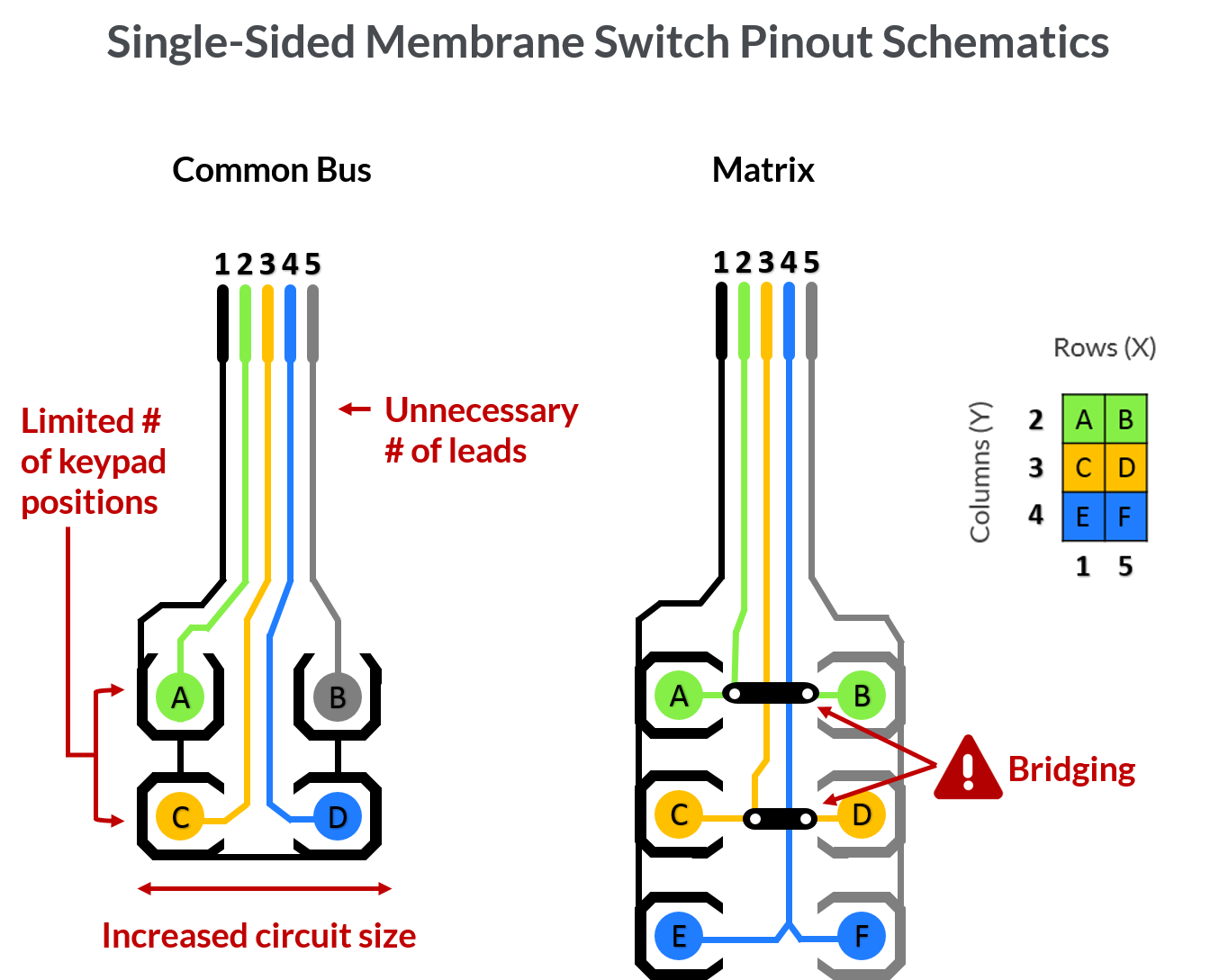Recognizing the Capability of Membrane Layer Switches for Interface Instruments
The performance of membrane changes stands for a significant innovation in individual interface layout, combining effectiveness with visual adaptability. As industries increasingly prioritize user experience, comprehending the nuances of membrane layer button modern technology comes to be vital.
What Are Membrane Layer Buttons?
Membrane switches are cutting-edge interface gadgets that facilitate individual communication with digital tools. These versatile parts include several layers, including a graphic overlay, spacer, and a published circuit layer. The style enables a smooth integration right into different digital tools, boosting both the visual and functional elements of customer interfaces.
Membrane layer buttons are commonly employed in a wide variety of applications, from home appliances to commercial equipment and clinical gadgets. Their construction generally features a slim profile, making them a perfect selection for small styles. The tactile feedback given by these buttons can be crafted to satisfy particular user preferences, guaranteeing effective interaction between the customer and the gadget.
Durability is an additional significant advantage of membrane layer buttons, as they are immune to dirt, dampness, and chemicals, which enhances their life expectancy in requiring atmospheres. In addition, these buttons can be personalized in terms of form, size, and visuals style, allowing for branding and user-specific attributes. Generally, membrane switches over represent a practical remedy for improving user experience in digital devices, incorporating performance with aesthetic charm in an efficient fashion.
How Membrane Layer Switches Job
Operating on a straightforward concept, membrane changes utilize a split construction to sign up user input successfully. Each switch includes multiple layers, consisting of a printed circuit layer, a spacer layer, and a leading visuals layer, which are designed to work with each other effortlessly. When a customer presses the top layer, it presses the spacer layer, bringing the conductive elements of the circuit layer into call with each other.
This get in touch with develops a closed circuit, signifying the device to carry out a specific feature. The design enables different configurations, consisting of tactile comments, which can enhance the individual experience by giving a physical feeling upon activation. The materials used in membrane switches usually include flexible substrates, such as polyester or polycarbonate, which make sure resilience and durability versus damage.

Key Advantages of Membrane Layer Switches

Another this contact form substantial benefit is their compactness. Membrane buttons are slim and light-weight, which makes it possible for manufacturers to conserve area in their gadgets without sacrificing performance. This attribute is specifically advantageous in applications where weight and quantity are crucial factors to consider.
In addition, membrane layer switches are resistant to dust, dampness, and chemicals, improving their longevity. This strength prolongs their life-span and minimizes the demand for constant replacements, causing cost savings in time.
In addition, the tactile comments offered by membrane layer buttons can be enhanced to enhance customer communication. They can consist of attributes such as increased buttons or audible clicks, improving usability and user experience.
Applications Throughout Industries
User interface gadgets utilizing membrane layer buttons are common in a large variety of sectors, showcasing their flexibility and performance. Membrane Switch. In the medical sector, membrane layer buttons are integral to gadgets such as analysis equipment and person surveillance systems, where their resilience and ease of cleansing are critical for keeping hygiene criteria. Similarly, in the auto sector, these switches are employed in control panel controls and infomercial systems, providing a streamlined and modern interface for users.
Additionally, the customer electronic devices industry these details take advantage of membrane layer switches in devices and portable gadgets, where portable layout and user-friendly interfaces boost user experience. Industrial applications also leverage membrane layer switches for control panels in equipment and automation systems, highlighting their robustness and resistance to harsh settings.
In the aerospace and protection markets, membrane layer switches are utilized in cabin controls and devices, where reliability and performance under extreme conditions are vital. In addition, the pc gaming sector significantly includes membrane layer buttons in controllers and game makers, adding to an engaging user experience. On the whole, the versatility of membrane layer switches enables their widespread usage throughout various industries, emphasizing their significance in modern-day interface style.
Future Trends in Membrane Layer Change Technology

In addition, making use of sophisticated products, such as polycarbonate and polyester films, is anticipated to climb, supplying improved toughness and resistance to environmental stressors. These products contribute to the overall long life of membrane switches, making them ideal for harsher industrial applications.
Moreover, the consolidation of clever technology, consisting of IoT connection, will certainly allow membrane buttons to interact with other devices and systems, helping with a much more interactive customer experience. This fad straightens with the expanding need for wise tools throughout different industries, from healthcare to customer electronic devices.
Lastly, modification choices are expected to broaden, enabling suppliers to develop bespoke remedies customized to details customer demands and preferences. These growths will position membrane layer switches as essential elements in the evolution of user interface innovation.
Verdict
In verdict, membrane layer switches over stand for an essential improvement in user interface modern technology, offering a reliable and flexible solution for diverse digital applications. As advancements in product scientific research and touch sensing innovations proceed, the functionality and applicability of membrane buttons are anticipated to expand, strengthening their significance in modern electronic tools.